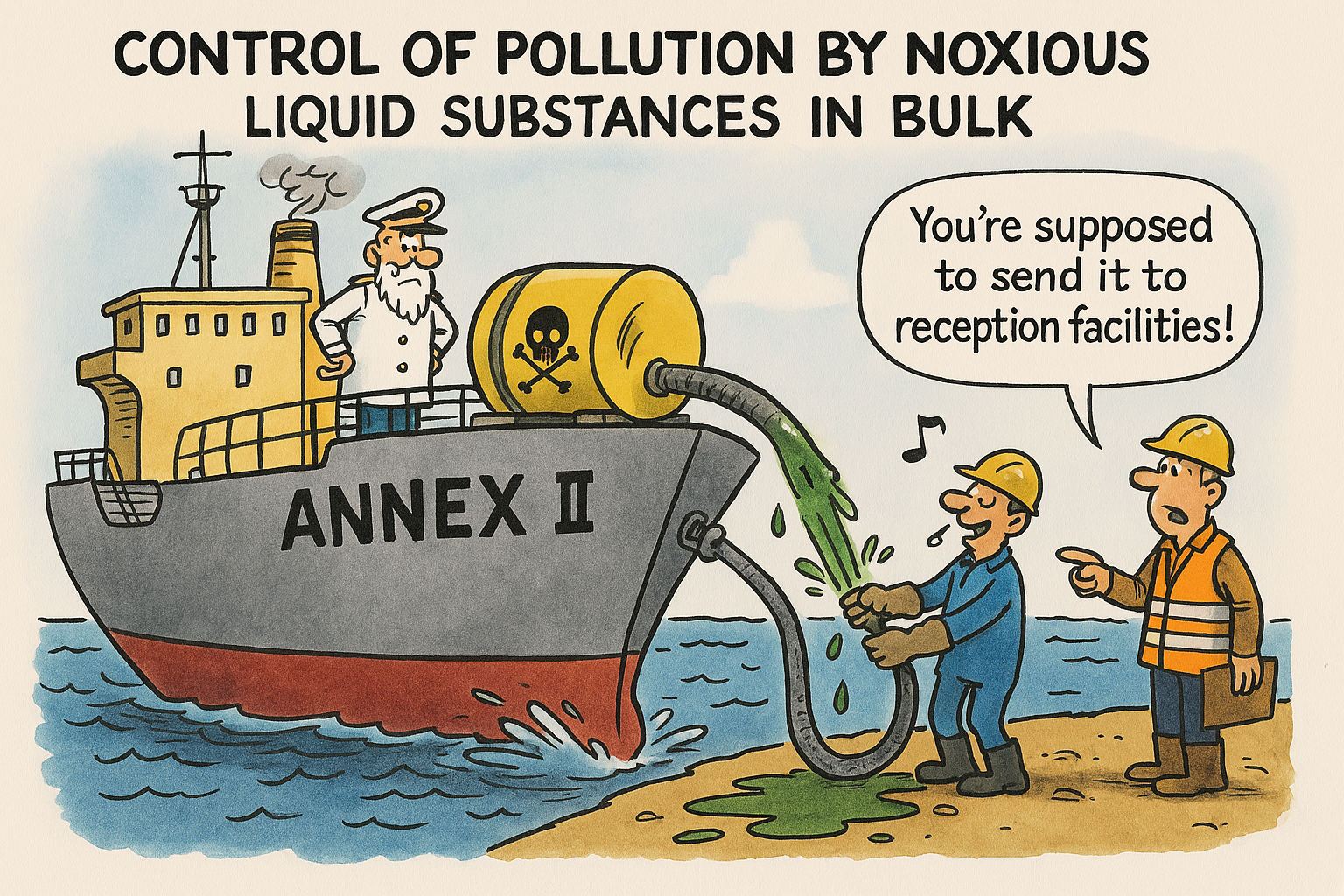Your cart is currently empty!

📘 MARPOL Annex II – Control of Pollution by Noxious Liquid Substances in Bulk
Objective:
MARPOL Annex II regulates the prevention of marine pollution caused by noxious liquid substances (NLS) carried in bulk. These are primarily chemical cargoes transported by chemical tankers. The annex defines how such substances must be classified, handled, discharged, and documented.
Scope of Application:
- Applies to all ships carrying noxious liquid substances in bulk, especially chemical tankers.
- Covers loading, unloading, cleaning, and discharge operations.
- Also applies to port reception facilities and discharge standards.
What Are Noxious Liquid Substances (NLS)?
NLS are liquid chemicals that pose a hazard to the marine environment. They may be:
- Toxic to marine life
- Bioaccumulative
- Persistent in the environment
- Or cause other harmful effects
These include industrial chemicals like xylene, methanol, vegetable oils, and many more.
Cargo Classification System:
Substances are divided into four categories based on their level of hazard:
- Category X: Major hazard – discharge into the sea is prohibited.
- Category Y: Significant hazard – discharge allowed under strict conditions.
- Category Z: Minor hazard – more relaxed discharge criteria.
- Other Substances (OS): Considered non-harmful to the marine environment – basic controls apply.
Key Requirements and Procedures:
🧪 Prewash Procedures
- Mandatory for Category X substances and certain Y substances when unloaded at designated ports.
- Residues must be collected and discharged to shore reception facilities.
⚙️ Tank Cleaning and Discharge Standards
- Use of approved stripping systems to reduce cargo residues.
- Discharge permitted only if concentration and quantity meet defined limits, and the ship is en route.
- Cargo tanks must be prewashed and residues properly treated in high-risk cases.
📘 Cargo Record Book
- Ships must record all operations involving NLS (loading, unloading, tank cleaning, discharge).
- Entries include date, time, location, substance, quantity, and receiving facility.
Ship Types and Construction Standards:
- Chemical tankers must comply with the International Bulk Chemical (IBC) Code, which governs design, equipment, and construction.
- Includes requirements for:
- Cargo containment systems
- Pump and piping arrangements
- Tank coatings
- Ventilation and safety systems
Port Reception Facilities:
- Ports that receive NLS cargoes must provide adequate reception facilities for residues and prewash effluent.
- Ships must retain residues on board if no suitable facility is available.
Enforcement and Certification:
- Ships carrying NLS must have a valid Certificate of Fitness issued by the flag state or recognized organization.
- Port State Control may inspect ships and their Cargo Record Books for compliance.
✅ Summary:
MARPOL Annex II plays a vital role in reducing chemical pollution from ships. It enforces strict handling, discharge, and documentation rules for thousands of liquid chemical substances. Through classification, recordkeeping, ship design, and shore support, it helps protect marine ecosystems from hazardous industrial byproducts.
